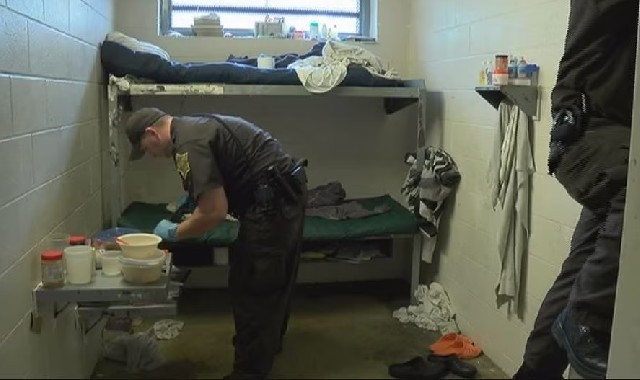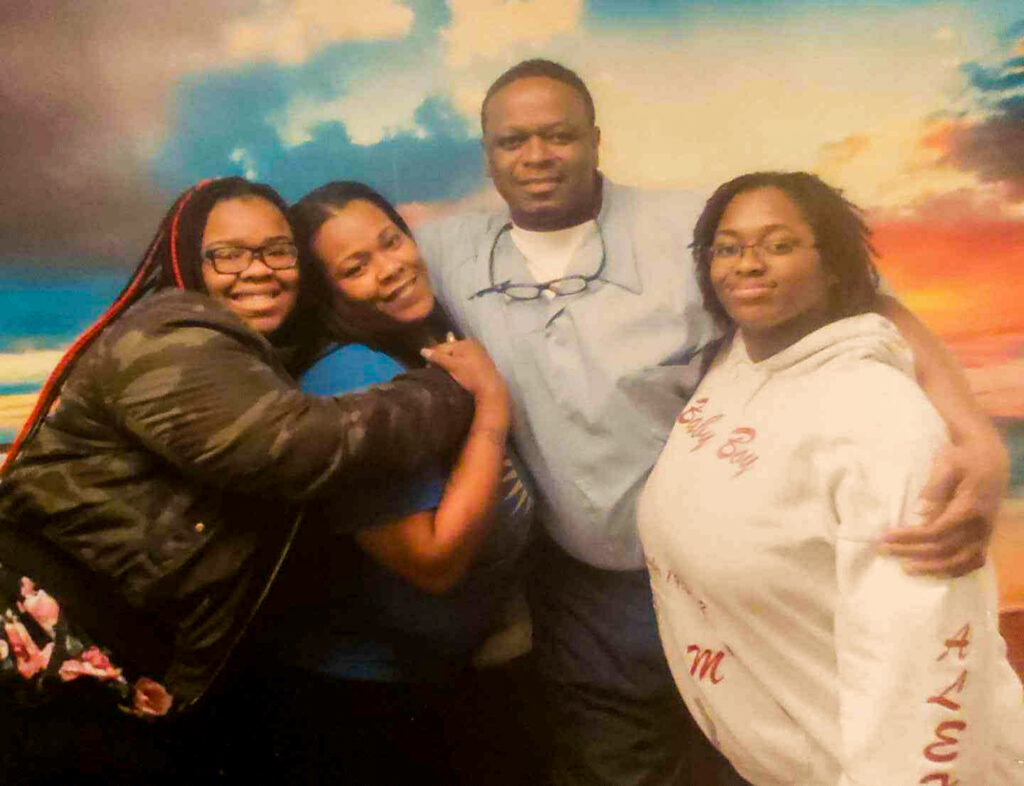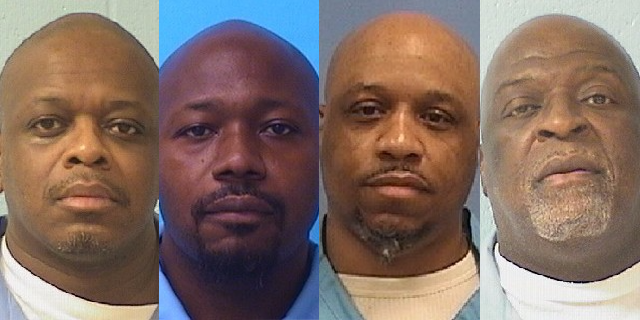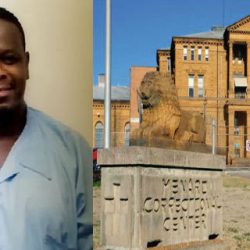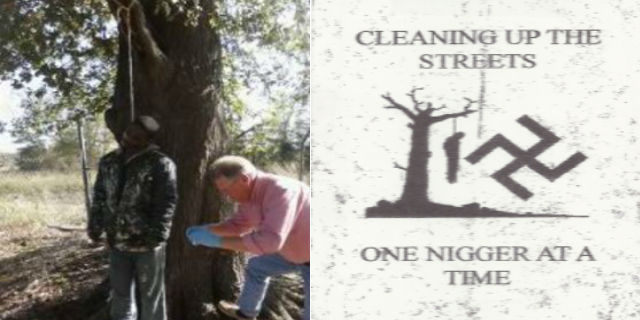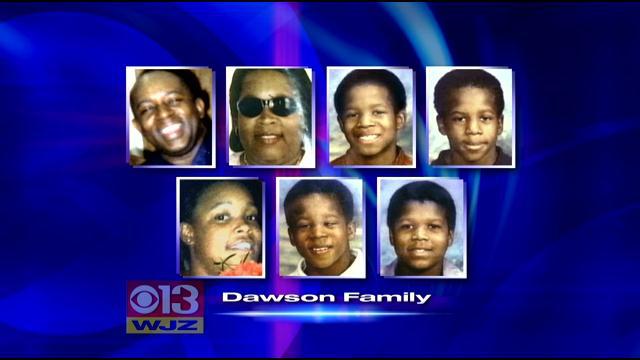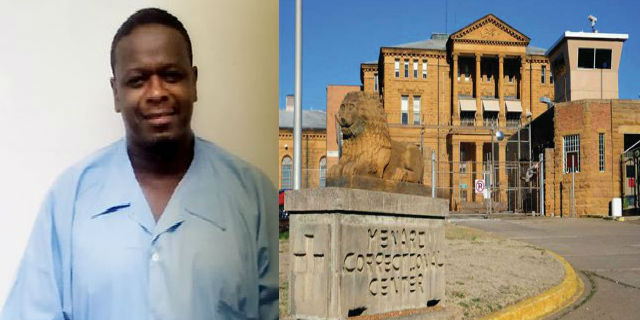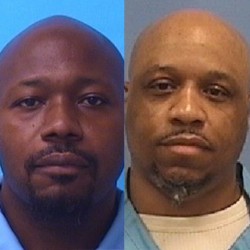
Imagine if you lived in a society where your local police or county sheriff office could create false criminal charges against you and even pay confidential informants to lie in court, implicating you in a murder case or other violent crimes. Then imagine that with the help of state law enforcement officials, jury selection manipulation tactics are implemented to select jurors most favorable to the prosecution’s case. Murder charges are of such a serious nature you definitely need a hired attorney, but what if you’re financially unable to secure private counsel, and the court appoints a lawyer for you who just so happens to be a special defender selected by the judge, and a former law partner of the state attorney prosecuting your case. This scenario wouldn’t exactly be the ideal situation for any defendant facing imprisonment that could send them to the slammer for decades.
There are so many people in our nation who have been indicted, tried in a court of law, and then subsequently convicted of crimes that were born out of false charges drummed up by dirty cops and corrupt prosecutors. Then, many are sentenced to serve time in a penitentiary, away from their families and loved ones for years. Some sentences are so long that convicts often are resolved in their fate, and try to cope with their time the best they can. Others are consistently and diligently spending their time investigating how such an injustice could have happened to them.
After decades of incarceration many of those who were wrongfully convicted are transformed into A students of their own cases. Their diligence in researching the law rewards them with the knowledge of having learned the intricate details of their criminal trial that resulted into their conviction. Once the ugly truth of how such an injustice happened to them, and now with actual proof that they were wrongfully conviction in hand, you would think that even a court appointed lawyer would try to mount an appeal with claims based on new evidence that should get their conviction reversed. However, many appellate counsels are uninterested in newly discovered evidence, and instead they often times try to get defendants tp drop all of the claims within their appeal which proves their innocence, and encourages them to take a deal that’s brokered with the state prosecutor, and usually entails a meager sentence reduction. Then if deal is refused, and a request is made to pursue the claims of innocence, some are abandoned by their lawyers (who if you remember, are routinely a former law partner of the prosecutor) for years, and in some cases their case are even taken off the court docket, leaving them in an appellate limbo.
Much of what I’ve described is akin to a society ruled by dictatorship, or perhaps a complete totalitarian system of government oppression. Trumped up charges which entail paid witnesses, suppression of exculpatory evidence, jury tampering, police and prosecutors who lie, and judges who seem complicit by not allowing defendant’s claims to be fully developed on appeal, and taken judicial measures to ensure that a higher court never reviews a case on appeal, is probably the most partisan form of jurisprudence imaginable within any system of government. Unfortunately, there are similar patterns and practices that I have described regarding these systems of injustices right here in America. This article is about four men (James Evans, Valdez Jordan, Larry Greer, and Jeffrey Ewing), whose stories are simply incredible on their own individual merits, but collectively tell a very dark and desolate tale of corruption by law enforcement in southern Illinois. No major media outlet has ever written or even broadcasted about these cases collectively in conversations to line up the disturbing parallels, and patterns of practice within the Madison County Illinois justice system. Quite frankly, no one ever cared because they are all black men who caught the ire of police, and prosecutors want society to believe that they are all violent murderers who belong behind bars.
For over three years now, I’ve reviewed thousands of documents, interviewed a volume of witnesses related to the criminal cases of all of these men. What their cases have in common is they were all prosecuted by the same state attorney (Keith Jensen) and at some point, whether during their individual trials or appeals, were represented by the same defense counsel (Randy Hale). Similarly, each and ever one of their cases were born out of the investigative work of former Madison County Sheriff Bradley Wells (who is currently the Chief of Police in Woodriver Illinois). While I have weighed the credibility of many people that I have interviewed, the record in most of these cases tell a compelling story of its own, and adds tremendous credibility to the accounts of various people from the city of Alton Illinois.
Background
In the mid to late 1990s the city of Alton which is just east of the Mississippi River in southern Illinois, was under siege, just like most urban towns in America, as it was in fact the height of our nation’s drug epidemic. The proliferation of drug addicts seemed endless, and the illegal drug trade left a harrowing volume of carnage in its wake. Even in the small midwestern town of tiny Alton Illinois, violent murders were on the rise. Some of the victims who fell prey to street violence are why this story is even being told. James Evans was convicted of killing young Nekemar Pearson, Valdez Jordan was convicted of the killing of Kenneth Spann, Larry Greer was convicted for the killing of Brian Warr, and Jeffrey Ewing was convicted for the killing of Dwight Riddlesprigger and for the killing of Antonio Ray years later.
Incredibly, none of their cases actually contained any evidence of any kind that directly linked them to the killings they were individually accused of committing. In fact, all of their cases collectively were highly circumstantial and weak cases that were tried before all white juries. To bolster the state’s cases against these men (who all admittedly were no angels), the prosecutor elicited the assistance of professional “jail house snitch Demond “Duke” Spruill and Jody Wesley, who claim that the four men had all confessed during individual conversations with them in the Madison County jail. Then in 2005 the ugly truth surrounding their convictions was revealed, when an Appellate court overturned the murder conviction of a man name Jeramy Brown (who was white), after discovering that the state had repeatedly used Demond Spruill (who testified that Jeremy Brown confessed) in a volume of other murder cases where he claimed others had confessed also, related to other separate murder cases. The court’s ruling included harsh language for Madison County prosecutors for their recycled use of Spruill, citing that “every time the state has a weak case, this guy (Demond Spruill) shows up, and the jail cell becomes a confessional despite astronomical odds.” Spruill’s testimony was the most damaging piece of evidence in each of their cases (Evans, Jordan, and Ewing), with the exception of Larry Greer, who professional “snitch” Jody Wesley testified against.
Jeramy Brown’s case pertaining to the killing of Michael Keller is very telling juxtaposed to similarly situated black defendants such as Evans, Jordan, and Ewing who were all convicted of murder and the state’s star witness in their cases was also Demond Spruill. Despite the extremely violent and heinous details of the Keller murder, and Brown actually having made incriminating statements to Spruill during a state eavesdrop operation, that included a solicitation of murder plot by Brown to have Spruill kill state witnesses who were scheduled to testify against him, the Appellate court tossed out Brown’s conviction because it ruled that Spruill was in fact working as an agent for the state during the time in which the 6th Amendment grants a defendant right to counsel when questioned by any arm of the prosecution (Read Jeramy Brown’s conviction reversal decision here). The state eventually convicted Jeramy Brown for the murder of Michael Keller, and then had the conviction upheld by the Illinois State Supreme Court.
Mean while the cases of Evans, Jordan, Ewing, and others haven’t even been allowed to move forward in the appeal process for nearly two decades, because Madison County courts won’t adjudicate the claims in their appeals, which appears to be a stalling tactic to prevent errors, violations of the law, and other highly problematic elements of their convictions from being fully developed on the record in their respective cases. To some attorneys that I have interviewed regarding these cases, I appear ignorant to the law by claiming that the cases of these men have all been in the “post conviction” stage for at least 18 years. They are quickly educated on the pattern and practices of the Madison County Illinois court system. To many the process seems rather confusing because the state of Illinois has long established that “post conviction” proceedings should only take a little more than one year to conclude, but apparently that standard doesn’t apply to the Madison County Courts, and the inordinate delays in these cases seems unconstitutional. There were blatant violations of the law related to the prosecution of their cases and much of the following may be exactly why:
Confidential Informants and Perjured Testimony
Although Demond Spruill was a state witness who regularly testified in murder trials (some say just about every murder case in Alton), his credibility never appears to come under scrutiny by the many jurors seated for trials in which he testified in. It seems as though all murderers in the city some how run into Spruill (who is a convicted felon himself) in the county jail and then pour out their hearts to him, while confessing to having committed murder. Its suspect and highly improbable to have ever occurred, but Spruill wasn’t the only one who played a major role in helping the state prosecutors to convict criminal defendants. Larry Greer was also utilized as an informant by police and prosecutor Kieth Jensen. Greer admittedly was a drug addict that had been a “laced” smoker (Marijuana, LSD, Heroin, and Cocaine) off and on since the age of 12 years old.
Madison County Sheriffs took advantage of Greer’s addiction by providing him with stories that fit a theory that they fabricated to file criminal charges against people they wanted off the streets. During a interview with Mr. Greer from the Graham Correctional Center in Hillsboro Illinois, Greer told TPC that he was provided with information about criminal cases, study the material, advised to implicate himself in those cases, and then in exchange he would be paid which he used to supply his drug usage. Greer has even said that he was allegedly given back his $1500 bail money on one occasion, and he was even expecting more money from Madison County Sheriff Bradley Wells in exchange for testifying falsely against people.
Just like Larry Greer, Jody Wesley also falsely testified against people at the behest of police and prosecutors. An Appellate Court judge even gave credibility to both Greer and Wesley’s false testimonies in a ruling after highlighting an incident where Greer and Wesley were traveling in a prisoner transport vehicle together, and jokingly discussed that “lyng ain’t snitching” and “we’re gonna say what ever detective Bradley Wells and prosecutor Jensen want us to say, to get out of jail.”
Also, there are others whom say they were either under the influence of alcohol or narcotics when they witnessed certain crimes, but Alton police and county sheriffs used their testimonies to help prosecutors convict defendants of murder. Some who spoke on conditions of anonymity say they were using drugs for nearly an entire week before the murder trial for which they testified in on behalf of the state, was actually high on drugs during their testimony, and say the prosecutor knew about it. One witness in particular said he was so high on drugs that he doesn’t even recall what he actually testified to at the trial. None of this information was ever made known to the trial jury, and the defense counsel never tried to impeach the witness’ statements or even attempted to inquire about the witness’ drug use. “It was a common practice for Alton police and county sheriffs to use information from people who struggled with drug addiction and then ran afoul of the law”, a witness said. Police intimidation tactics were often used to pressure people to lie and make false statements, in exchange for making their personal criminal charges go away. Official documents even reveal how the police even allowed violent offenders go free after they lied on the stand for police and prosecutors.
James Evans
In the summer of 1995 a home invasion occurred at the residence of James Evans. he was robbed of some minor personal items and expensive car radio speakers. Word got around who the masked perpetrators were, and young Nekemar Pearson of Alton was one of the people identified as having been involved in the home invasion at Evans’ home. Pearson eventually went missing around June 24 of 1995. He was under court ordered home monitoring pending trial for a murder (the killing of Willie Nichols). After Pearson went missing it was rumored that Evans killed him in retaliation for the home invasion (but on the day police claim Pearson was last seen alive, there were reports that Pearson was being chased by family members of Willie Nichols, who were shooting at him as he fled). Police reports reveal how another man name Marcus Holloway gave police a statement regarding the home invasion, implicating himself and others. Even though a volume of people participated in the crime (if you follow the state’s theory), young Nekemar Pearson was believed to have been the only one killed for his involvement.
Evans who had no prior history of violence was eventually charged with Pearson’s killing. It was rumored that Madison County Sheriff Bradley Wells was the source of the rumors which fingered Evans for the Pearson murder. At his trial the state didn’t offer any direct evidence which linked Evans to the crime except hearsay testimony. Many of the witnesses were on the hook with the police and had pending criminal charges of their own, like Clifton Wheeler, Larry Greer, and Jody Westley. Wheeler implicated himself in the Pearson killing by testifying that he witnessed Evans kill Pearson in a wooded area in Godfrey Illinois where his remains were discovered, but court transcripts show that Wheeler lied on the stand, and prosecutor Kieth Jensen knew about it. Wheler had already been sentenced in a separate murder case, but when questioned on the stand under direct examination, he denied receiving anything for his testimony at Evans’ trial. Kieth Jensen who represented the state at Wheelers sentencing was well aware that he received a plea deal for his testimony in the Evans case, and that Wheeler had perjured himself (a violation of the law). More importantly, Jensen concealed Wheeler’s plea deal from the trial jury, which not only cast doubt of Wheeler’s credibility, but highlights how a state prosecutor knowingly broke the law in the Evans case (Read an excerpt from Clifton Wheeler’s perjured testimony in the trial of James Evans here). Clifton Wheeler had in fact already made a plea deal with the state (Kieth Jensen who prosecuted Wheeler) prior to testifying at Evans’ trial. If Wheeler was telling the truth about witnessing Evans kill Pearson, then why did the state knowingly break the law? (Read Clifton Wheeler’s Sentencing Plea Deal here).
Larry Greer and Jodi Westley who also testified against James Evans, are admitted liars and the trial jury never heard about the intricate plea arrangements they both brokered with the state prosecutor in exchange for their testimonies (Read an excerpt from an official court document highlighting Greer And Jodi Wesley’s admissions to lying for state officials in exchange for plea deals here). For instance, Greer was in trouble with criminal charges and was able to broker a deal to not only have his charges dropped, but even had authorities pay him for false statements against Evans (Greer received his $1500.00 bail money back as payment).
The state’s case was based on hearsay testimony from known felons, admitted liars, and was highly circumstantial. That’s where the state introduced Demond Spruill who claims that Evans confessed to him while at the county jail. A jury convicted Evans of the Pearson murder, but that wasn’t enough for state prosecutor Jensen. Evans was then indicted and tried in a weird murder conspiracy. The state alleged that Evans hired a man name Robert Fletcher (best friend of of Nekemar Pearson, who Evans was convicted of killing) to kill Lester Warr, the father of Briann Warr (who police say was suspected of aiding Evans and Clifton Wheeler in the Pearson murder). Along side Evans, a woman name Latosha White-Hamilton was charged with conspiracy to commit murder also.
The state alleges that Evans instructed Hamilton to give a man name Tommy Rounds (a known police informant and a cousin of James Evans) a gun to kill Lester Warr. Hamilton who resides in the state of Missouri, told TPC that the state’s claim of a murder conspiracy was “a complete fabricated story.” Hamilton says Evans only requested that she “look out for Rounds,” who had just came home from being incarcerated. Rounds was wearing a wire for state prosecutors when he came home and eventually met with Hamilton. Hamilton says she believed that Rounds would be in need of some money as most who are recently released from incarceration do. “He told me that he needed money to get back to his hometown in Illinois,” and kept calling her over an extended period of time. Hamilton went on to say that when she finally met with Rounds, instead of requesting the money he had previously asked for, he asked if she had a fire arm, and said that she only had her late husband’s old gun that had been in the closet for years. She said that at the time she had two of her small children and her young nephew living with her, and wanted the weapon out of her home any way, so she subsequently sold the weapon to Rounds for $50.00. Hamilton admits selling a gun in Illinois without a license was a violation of the law, but denies being involved in any kind of murder conspiracy, and when she learned that Rounds was in fact wearing a wire during their brief exchanges, she advised her attorney (court appointed lawyer) to obtain the recordings. She says the recordings would prove that their was no conspiracy surrounding the sale of a firearm to Tommy Rounds.
Rounds also wore a wire for for the state while having conversations with Evans at the county jail. Some of those recordings were played during Evans’ trial, but must of the recordings were inaudible. TPC has obtained transcriptions of some of those recordings, and the dialogue doesn’t follow a normal conversation pattern, let a lone a conversation about a murder conspiracy. Evans was subsequently convicted of the conspiracy to commit murder count also. He was sentenced to a total of 107 years in the state of Illinois Division of Corrections for both cases. Evans who has always denied both killing Pearson and conspiring to have Lester Warr killed, has stated that he never had any conversations with Spruill, and that the recordings played during his trial were edited (he claims the trial recordings were a combination of multiple conversations edited together to appear as one). and one of his appellate claims was regarding those trial recordings.
Hamilton who was very close friends with James Evans also said that police repeatedly interrogated her, while threatening her to tell them something incriminating about Evans. Hamilton says they held her in the county jail for over four months in an attempt to get her to make a statement, but says she was eventually set free when the state dropped the first degree murder conspiracy charges against her. She would fight lesser charges for years until she pled guilty to the solicitation of a firearm without a license. Hamilton said that the so called conspiracy tapes with her and Rounds have never been produced by the state.
Then in 2001, years after Evans had already begun serving his sentence, Evans received a letter from Appellate Defender Dan W. Evers, who forwarded a copy of a police report from an Alton School Resource officer. In the report Det. J. Cooley writes that he observed Nekemar Pearson walking down a street in Alton on July 3, 1995, and nearly two weeks after the day that state prosecutors allege that James Evans had killed him. Attorney Evers went on to state in his communication to Evans, that he discovered the police report in some paperwork that was sent to his office. The very existence of Det. Cooley’s report establishes that the police was aware that Pearson was seen alive after the day they told a grand jury and a trial jury that Evans had killed him, and its also clear that police officials had such discovery long before the state sought an indictment of Evans for the Pearson murder. This highly exculpatory document was suppressed by police and the prosecutor’s office from Evans’ defense, and his trial jury never saw it (Read the Appellate Defender Letter to Evans and the exculpatory police report from police officer J. Cooley here).
Moreover, Evans first requested the trial recordings discovery (associated with Tommy Rounds) back in 2001, and despite a mountain of court orders directing state officials to turn the items over to Evans, the state to this day has never complied. The state’s refusal to comply with court orders with impunity, coupled with perjured testimony, paid witnesses, and the suppression of exculpatory evidence clearly establishes that at the very least, James Evans as a matter of fact and law, was denied a fair trial under the U,S, Constitution.
While I have already written a volume of other articles pertaining to the case of James Evans, his story can best be summarized in this article: “Justice Delayed Is Justice Denied: The Incredible But Surreptitious Conviction Of James Evans Summarized.
Larry Greer
Larry Greer is very well known to the Alton police and the Madison County Sheriffs office, as his drug addict led him down a destructive path that culminated in a 40 year prison sentence. While Greer is setting in a Illinois state prison convicted of first degree murder, he is just as much a victim as the man for whom he is charged with killing. His personal struggles with the law and addiction made him extremely vulnerable, and the police exploited it to the fullest. Greer who is an admitted liar, testified against James Evans during his murder case. Greer told TPC that what he told Evans’ trial jury was in fact all lies, much of which was created and fed to him by police (Bradley Wells) and state prosecutor Kieth Jensen.
They used scare tactics to make Greer adopt their fabricated stories under duress. Greer was charged with killing Brian Warr, even though it was in fact a man name Robert Fletcher who pulled the trigger. Brian Warr and Greer were good friends (Warr was also a mutual friend of James Evans). One fateful night outside an Alton night club, Greer and Warr were seated in a vehicle when Fletcher shot and killed Warr. Greer rushed Warr to the hospital, but cops held Greer hostage when he initially wouldn’t identify who the shooter was. Greer told police that he ducked when shots were fired and didn’t see the shooter. The police then threatened to charge Greer with obstruction of justice, and for a heavy drug user like Larry Greer, a stint in the county jail would be extremely painful for him.
So Greer played ball, by giving in to police demands and adopted a story that alleges he was directed to transport Brian Warr to the club in Alton that night at the behest of James Evans, and for the purpose of him being killed by Robert Fletcher in a conspiracy that Greer alleges was orchestrated by Madison County Sheriff Bradley Wells and State Prosecutor Kieth Jensen. “It was all made up,” Greer told TPC. “They kept getting me to implicate myself more and more every time I lied for them,” he said. Greer says they even paid him on multiple occasions to lie for them. It was monies he admits he used to support his drug addiction.
Greer also states that he was even “expecting more money” for his cooperation. Greer’s claim that he was paid by police and a prosecutor was corroborated by Madison County Sheriff Bradley Wells, when he admitted given Greer money during testimony in a trial, and while he (Wells) even told the court that state prosecutor Kieth Jensen approved giving Greer $1500.00 bond money back that was posted for him in his own criminal case, in exchange for testifying at a Grand Jury indictment hearing (Click the link to read an excerpt from Madison County Sheriff Bradley Wells Testimony in a trial).
Only when it was time for Greer to provide their fabricated story before Robert Fletcher’s trial jury, Greer had become exhausted with telling lies for the prosecutor’s office, and refused to go along with their story (Click this link to read an excerpt from court transcripts of Greer’s exchange with prosecutor Kieth Jensen in open court, where Greer gives details of how they wanted him to change his story in the James Evans case, and how prosecutor Jensen told him and others what to testify to in exchange for deals in their own criminal cases). He was subsequently charged with the murder of Brian Warr, despite the fact that he actually drove Warr to the hospital that night. Greer even gave police one of the initial statements during the Warr homicide investigation.
To add insult to injury, Greer was promised immunity for his fictitious role in the Warr murder conspiracy, but when he wouldn’t go all the way and connect the dots for the state, by testifying falsely and implicating James Evans as the master mind who hired Robert Fletcher to kill Brian Warr (a scenario that would have made Evans eligible for the state’s death penalty), his immunity was stripped away (a violation of the law) which ultimately led to Greer’s conviction in the Brian Warr killing. During an interview with Greer from the Graham Correctional Center in Hillsboro Illinois, Larry Greer told TPC that “Everything I testified to was given to me by the police (Bradley Wells) and the state (Prosecutor Kieth Jensen), now I’m locked up for the story that they made up (Read Larry Greer’s Affidavit here: Affidavit of Larry Greer).
Valdez Jordan
In the case of Valdez Jordan, it was a routine traffic stop that became very odd when a state cop made a very strange request of Mr. Jordan who was riding down an Alton street when he was pulled over by an Illinois state police officer. The cop asked Jordan why his car was swerving when the cop was behind him? Jordan explained to the officer that he had dropped something and was trying to retrieve it. The state cop ran Jordan’s license and registration and came back to his vehicle and advised Jordan that he checked out, that he wasn’t in trouble, but a Madison County Sheriff name Bradley Wells had overheard him calling in his info to police dispatch. Wells contacted the state cop and asked him to request Jordan to stay there momentarily because he would like to speak with him. Jordan says he was reluctant, but stayed until Wells arrived.
When Wells pulled up Jordan says he motioned for him to come get inside of his police cruiser, and Jordan got in. Wells then asked Jordan if he knew who killed “Pookie” (Nekemar Pearson). Jordan states that he told Wells that he doesn’t know anything about that, and then Wells allegedly stated “you know who killed “Pookie,” Raven (James Evans) killed “Pookie.” Jordan says Wells asked him about his gang affiliation and he responded “I think you already know the answer to that.” Jordan said the conversation got even stranger, as Wells appeared to solicit him to do something to James Evans, because he had allegedly killed his “homeboy,” and was selling drugs on his gang’s turf. Jordan says he kept his conversation with Wells brief and then got out of his cruiser.
Months later Valdez Jordan was locked up in the Madison County jail facing murder charges related to an Alton “Crap house” robbery that resulted in the killing of a man. Jordan says he was called by jail correctional staff for an attorney visit, but when he got to the visiting area, no attorney was present, instead it was Madison County Sheriff Bradley Wells. Jordan alleges that Wells offered to assist him with his current criminal case, stating that he could “make the charges disappear” if he was willing to testify to a certain “scenario” (that essentially fingered James Evans as the person responsible for the killing of Nekemar Pearson). Jordan states he reiterated to Wells that he had no knowledge pertaining to that case, and that he didn’t need his assistance with his own criminal case because he was innocent of the charges. Jordan says that he was called on at least another occasion for an attorney visit in which it was Bradley Wells again. He states that he was requested by Wells to assist in the Pearson killing by providing false testimony against Evans for a second time, but only he was given a warning upon leaving that particular meeting with Wells, who allegedly stated “you’re going to regret not cooperating with me.”
Jordan believes that Well’s parting words to him that day resulted in the recruitment of Demond Spruill to lie and fabricate a confession, allegedly provided by Jordan regarding the killing of Kenneth Spann at the Alton “crap house” robbery for which Jordan is now serving a 35 year sentence. Jordan also believes that arrangements began immediately after he last spoke with Wells at the Madison County jail, because as he entered the cell block Demond Spruill was being escorted to the same area for an allege attorney visit. He says he even warned Spruill that there was no attorney waiting for him, and instead “it was Bradley Wells out there.” Jordan also believes that was probably when the negotiations for Spruill to testify against him were set into motion. Valdez Jordan has always maintained his innocence related to the Kenneth Spann homicide, and has stringently denies having confessed the crime to Spruill or anyone else.
However, Demond Spruill would go on to later testify against Valdez Jordan while alleging that he had confessed to the “crap house” killing. Mr. Jordan believes that one of the main reasons he was fingered for the “crap house” shooting is because he refused to lie for cops who appeared to be desperately trying to develop a murder case against James Evans by any means necessary (official records in the form of a police report that contains Spruill’s initial statements to police, establishes that the tip from a confidential informant in the “crap house” killing that Valdez Jordan was fingered for, ironically originated from Madison County Sheriff Bradley Wells) (Read the Affidavit of Valdez Jordan here).
Mr. Jordan was subsequently convicted of murder in what could be described as another weak Madison County prosecution with a known professional “jail house informant,” Demond Spruill cast as the state’s star witness. Although Spruill’s appearance was highly problematic (which I’ll explain later in the article), there were other witnesses who provided vague, opinionated, circumstantial, and exculpatory testimony that collectively could never establish as a matter of fact that Valdez Jordan, or anyone else for that matter, was actually the gunman beyond a reasonable doubt during the fateful earlier morning hours in Alton. Although Jordan admittedly had been at the “crap house” gambling earlier, he says he left after having “craped out” (lost all his money), and wasn’t present during the robbery that resulted in the killing of Kenneth Spann.
State prosecutor’s however, pitched the theory to the jury that Jordan lost his money and came back armed in a violent rage to rob the place. During the investigation it was established by a volume of eyewitnesses at the “crap house” when the shooting occurred, that the perpetrator had a sheer stocking cap over his face which made it difficult to identify him. At Jordan’s trial no witness testified to observing Valdez Jordan shooting Mr. Spann, hell no one testified to even seeing the actual shooter’s face. Only one witness stated that he saw Valdez Jordan on the street outside of the “crap house” holding a gun after the shooting, but the same witness also testified to seeing others with guns in their hands also (like a man name Jarvis Brown). Some people in Alton familiar with the “crap house” told TPC that “the place had been robbed multiple times in the past,” and “there was a lot of money floating around in there. Everybody in there probably had a damn gun, and more than likely had taken their weapons out to protect themselves when the shooting started,” they said.
That witness who was the sole person, who claim to have seen Valdez Jordan at the scene of the crime immediately after the shooting, spoke on conditions of anonymity, and told TPC that he was “under the influence of mind altering drugs the night of the killing,” which was an important detail related to the case that wasn’t disclosed to the court, Jordan’s defense, nor the jury. It’s important to note here, that the witness didn’t actually see the shooting take place. His testimony only provided an alleged vantage from outside of the “crap house” after the place dispersed with people fleeing the area after the gun fire.
Some witnesses testified that they believe the person who committed the crime was Valdez Jordan because of the sound of the shooter’s voice. One of those witness (Ramando Alexander) who testified and claimed to had been knowing Jordan for about 6 months, a statement that Jordan says was untrue. He denies ever having known the witness. Court documents show that Alexander was also under indictment for an unrelated first degree murder case, which the state subsequently reduced to a lesser charge of unlawful restraint (in the killing of Antonio Ray) for his cooperation and testimony against Valdez Jordan. Court trial transcripts show how on cross examination it was revealed that Alexander actually had a deal to testify against Valdez Jordan, and despite a signed agreement being introduced into evidence, Alexander repeatedly denied it (Read the trial testimony of Ramando Alexander here). Also, Alexander’s statement to Alton police was entirely different from his trial testimony, as Valdez Jordan’s lawyer rightfully and thoroughly impeached on cross examination during the trial (Read an excerpt from Ramando Alexander’s statement to Alton Police here).
Another witness (a known drug addict) who testified and also pointed at the sound of Jordan’s voice, was the sister of a former girlfriend of Mr. Jordan. Only in her original statement to police, she says that she knew the voice, but couldn’t put a face with the voice, and then only after Alton police officials suggested Valdez Jordan’s name to her did she suddenly realize who the perpetrator was and changed her statement to identify the shooter to be, in her opinion Mr. Jordan, according to her testimony. That witnesses admitted that she had an outstanding arrest warrant for unknown charges squashed by Alton police and the prosecutor’s office in exchange for her testimony against Valdez Jordan. Moreover, Alton police arrested a witness four days before she was to testify in Jordan’s trial.
Her original statement to police placed Jordan at her apartment at the time of the shooting, while in police custody her statement suddenly morphed into placing Jordan at her place after the shooting, and claimed that Jordan told her that he heard the “crap house” had been robbed and he was going to find out more about it (placing doubt on Jordan’s claims of not being on the scene at the time of the crime). Also, arguments from Jordan’s defense counsel in court transcripts from a post trial motion hearing, disclose how the witness was actually held in police custody until the actual trial, and then immediately upon the completion of her testimony, she was released from police custody on her own recognizance with the approval of the state prosecutors (Read an excerpt from Valdez Jordan’s post trial motion hearing here).
Although some witness testimony against Valdez Jordan appear suspect (especially witnesses who suddenly regained their memory after being locked up by police), their accounts (witnesses who identified Jordan as the shooter because in their opinion they thought it was his voice behind the mask, and an admitted drug addict who say he saw Valdez Jordan on the street holding a gun after the shooting) collectively fall short of establishing Mr. Jordan’s guilt beyond a reasonable doubt. The testimony of a state’s witness not only put other people on the street with guns in their hands outside of the “crap house” after the shooting, but that witness even identified Jarvis Brown by name, which raises even more suspicion as to why Alton police never interviewed him during the course of the investigation (Read that witness redacted trial testimony here).
However, it was the testimony of Demond Spruill who provided the most culpable testimony against Jordan, claiming he confessed and made other statements that more than likely weighed heavily on the trial jury in determining their verdict, but as I eluded to earlier in the article, Spruill’s appearance was highly problematic. During pretrial motions Mr. Jordan’s counsel stated that his defense team was ready for trial, but Mr. Jordan wasn’t. Judge Charles Romani who heard the arguments addressed Mr. Jordan directly to ascertain why he wasn’t prepared for trial. Jordan told the court that their were witnesses who could testify for his defense who had not been interviewed by his lawyers and hadn’t been summoned for trial. He also expressed exception to the anticipated testimony of Demond Spruill who had testified in a volume of other murder cases. Judge Romani assured Mr. Jordan that his witnesses would be contacted and that during the trial, everyone would learn about Demond Spruill. “I even know about Demond Spruill,” the judge said. The trial proceeded as scheduled and the trial resulted in Mr. Jordan being convicted of murder (Read an excerpt from Valdez Jordan pretrial motion hearing here).
However, during a post trial motion hearing, Mr. Jordan’s lawyers requested that the verdict in the case be vacated, citing that there was insufficient evidence establishing that Mr. Jordan committed the crime, and also expressed concern of a state’s witness being released from police custody immediately after testifying in the trial. His lawyers also argued that Demond Spruill was in fact acting as an agent of the state when he held conversations with Mr. Jordan at the Madison County jail. They argue that as a defendant, Mr. Jordan had a right to have his legal counsel present during such conversations, and that the dialogue with Spruill without his counsel present in fact violated Mr. Jordan’s 6th amendment rights under the United States Constitution (meaning Spruill’s testimony shouldn’t have been entered into the record) (Read Valdez Jordan’s Post Trial arguments here).
State prosecutor Kieth Jensen countered the defense’s motion by claiming that “no one sent Mr. Spruill in their to speak with Mr. Jordan. They met on the cell block and that’s where the conversations took place your honor,” Jensen stated. Judge Romani eventually ruled that there was no evidence presented during the trial that establishes that Demond Spruill was acting as an arm of the prosecution, and the defense’s motions were denied, essentially allowing the guilty verdict to stand. However, official court documents related to this case reveal some alarming facts. When prosecutor Jensen claimed in open court that “no one sent Mr. Spruill in there to speak with Mr. Jordan,” he was in fact lying and the judge knew it. TPC has obtained documents that disclose the use of eavesdropping devices in the case in which Demond Spruill participated in at the behest of Alton police. Those documents are in fact signed by Alton police detectives, a police supervisor, state prosecutors, Demond Spruill and Judge Charles Romani himself. Although prosecutor Jensen lied in open court, it really wasn’t that shocking, as official court documents reveal how Kieth Jensen has repeatedly lied in open court during the prosecution of all four of these subject (Evans, Greer, Jordan, and Ewing) defendant’s cases.
During the pretrial motion hearing where Mr. Jordan expressed concern regarding the anticipated testimony of Demond Spruill, and Judge Romani stated that “even I know about Demond Spruill,” the obvious conflict of interest should have been recognized by the judge, who should have immediately recused himself from hearing the trial. Romani’s ruling pertaining to defense post trial motions on Spruill becomes extremely problematic, because his ruling seems to completely side step Jensen’s denial of Spruill’s obvious participation in a police and state prosecution investigation, and the fact that Judge Romani actually signed the applications and approved the request for the use of eavesdropping devices in the case could easily be interpreted as complicity in denying the defendant Valdez Jordan the right to a fair and impartial trial under the law. It appears that the state along side judge Charles Romani attempted to deliberately conceal the fact that Spruill had participated in eavesdropping activities which targeted Valdez Jordan, at the behest of state prosecutors (Read the official Eavesdropping documents here).
Additionally, the witnesses that Mr. Jordan told Judge Romani that he believed could testify on behalf of his defense, were never called during the trial, appeared to be no shows, and the defense counsel never requested a continuance or asked for time to present those witnesses before the jury. TPC has since conducted multiple interviews with one of those witnesses and learned that she (Monique Kimble) did in fact appear at the courthouse on the day of the trial, was placed in a room to await what she thought would be her opportunity to testify at the trial, but she was allegedly told by Alton police detective Shane Gibbs (the same cop who interviewed her on the morning of the homicide at the “crap house”) that her testimony would not be needed, and that she could go home. Ms. Kimble stated that she was “confused” regarding having been told her testimony wouldn’t be needed, but she says she left because she was intimidated by the police. She also told TPC that she had previously had several arguments with the same officer (Gibbs) during the initial investigation into the “crap house” robbery when she gave her eyewitness account of the shooting).
Ms. Kimble went on to say that she told Det, Gibbs of the Alton police that the shooter wasn’t Valdez Jordan, and that she thought the perpetrator looked like “Jarvis Brown” or maybe another man they called “Chuckie.” She said that Gibbs kept trying to get her to change her statement, and that the things Gibbs wrote down weren’t what she had told him. So, she says they had several arguments back and forth. She also claims that she felt intimidated by Gibbs and believed that Alton police had been harassing her son. She apparently was so fearful, that she eventually moved to Missouri away from Alton a short time after the murder trial took place.
Her eyewitness account which very well may have been impactful, was never heard by Valdez Jordan’s trial jury, as her statements corroborated the testimony of a witness who spoke on conditions of anonymity, and a statement given to Alton police by Demond Spruill, who all also placed a man name “Jarvis Brown” on the street outside of the “crap house” immediately after the shooting. Ms. Kimble’s sister (Pamela Burgess) was one of a few witnesses who actually experienced close direct interaction with the perpetrator. Ms. Burgess said she testified at the trial after receiving a subpoena. She told TPC that despite Alton police detective Cooley trying to get her to say that the shooter was Valdez Jordan, she testified to the fact that “the shooter was rude, very disrespectful toward women, calling them bitches, and had pointed the gun directly in her face,” but she couldn’t tell if the perpetrator was Valdez Jordan. She also said that she never told the police this, but that she was close enough to him to see “the complexion of his skin (light skin) and that he appeared to be much lighter than Valdez Jordan,” she said.
After conducting interviews with various witnesses, reviewing various official court documents and other valuable information related to this case, TPC has discovered extremely disturbing information regarding “Jarvis Brown.” It was learned that Brown actually lived on old Brittney Court (now Maple Manor) off Washington Avenue in Alton for a few years around the time of the “crap house” killing. Brown who lived with and dated a much older woman name Robin (a female cousin of Monique Kimble and Pamela Burgess) was a teenager known to rob people within the community, and had relocated to the state of Indiana a few years after the Kenneth Spann murder. His close relationship to Ms. Kimble’s Cousin afforded her the advantage of possibly identifying him as the “crap house” shooter, which she actually did in her police statement, but they apparently ignored her account, left it out of the report, and used intimidation tactics to suppress her statement from the jury.
Now, some of Brown’s violent behavior has been discovered through official records from the U.S. District Court of Southern Indiana in which they even sought the death penalty for Brown (Read Jarvis Brown’s federal court Death Penalty document here). Brown along with his associates engaged in a crime spree in which they were robbing “gambling houses” (the exact kind of illegal after hour and covert establishments like the Alton “crap house”) and an article on the Federal Bureau of Investigations website potentially brings new light pertaining to Brown’s possible involvement in the Alton “crap house” robbery to bare. In fact, in 2009 Jarvis Brown was convicted in a federal criminal case that was the result of a coordinated state and federal law enforcement investigation, including agents and officers from the Indianapolis Police Department Robbery/Homicide Unit, the Evansville Police Department, the Bureau of Alcohol Tobacco Firearms and Explosives, the Drug Enforcement Administration and the Federal Bureau of Investigation Evansville Safe Streets Task Force.
Brown plead guilty to one count of conspiracy to distribute controlled substances, one count of interference with commerce by threats or violence; three counts of using and carrying a firearm during and in relation to a drug trafficking crime or crime of violence resulting in death, and one count of tampering with a witness resulting in death. These revelations in relationship to the trial and conviction of Valdez Jordan are simply incredulous when considering the nature of the details entailed in Brown’s charges in the case, and especially considering the fact that various witnesses either testified to seeing Brown on the street in Alton outside of the “crap house” after the shooting, or believed that the shooter looked like him is extremely compelling towards Brown’s potential culpability to having been the actual shooter that night in Alton.
In the Indiana case Brown was charged with a 2005 Indianapolis to Evansville crime spree that included Brown and several associates, which left four persons dead. Brown’s group of heavily armed and violent cocaine and marijuana dealers operating in Indianapolis went on a crime spree that ultimately resulted in a series of approximately 13 drug dealer robberies, three attempted gambling house robberies, approximately 13 shootings, three gun murders, four gun assaults wherein the victims sustained permanent and life threatening injuries and one witness murder.
In addition to Indianapolis, where most of the incidents took place, Brown, the ringleader of the group, together with several associates also traveled to Evansville, and committed one of the robbery/murders. The weapons used by the group included a Tech-9 machine pistol, SKS assault rifles, shotguns and various handguns. The bloody trail came to an end on January 1, 2006, after Brown and several of his associates within a 24 hour period committed the murder and attempted murder of two individuals in Indianapolis. They were subsequently apprehended by officers of the Indianapolis Police Department after a high speed car chase through the near east side of the city. Jarvis Brown was subsequently sentenced to 5 consecutive life sentences plus 20 years, and is now being held at the United States Penitentiary Pollock, in Pollock Louisiana.
When we consider the statements given to police by witnesses on the scene around the time of the Alton “crap house” shooting, such as Monique Kimble, Gardell L. Ballinger, who both placed Jarvis Brown at the crime scene. (Read Gardell Ballinger’s statement to police here), it’s just difficult not to imagine that if Alton police had simply followed up on this particular lead in the case, then its quite possible that lives may not have been lost. That’s of course if Brown was actually the perpetrator who killed Kenneth Spann during the “crap house” robbery, and not Valdez Jordan as Alton Police and state prosecutors allege. TPC has learned that it was rumored and widely believed on the streets of Alton shortly after the killing of Kenneth Spann, that Jarvis Brown was in fact the person who commit the crime for which Mr. Jordan took the fall for, and some eyewitnesses on the scene apparently told Alton police as much (one even claim he saw Brown with a gun in his hand). Hell, even the state’s star “professional snitch” Demond Spruill gave police a statement that put Brown on the street outside the “crap house” after the shooting.
Spruill’s mentioning of Brown in a police report is highly suspicious though, as it was hearsay which he claimed that Jarvis Brown and a man name Kareem Hamilton gave him the details of what happened at the “crap house” the previous day, and appears to only serve as an explanation of his (Brown’s) presence on the street during those early morning hours. It was a cleverly plotted out statement orchestrated by Alton police that some believe was to rebut the constant mentioning of Brown’s presence on the street at the time of the crime by eyewitnesses who knew him as a “stick up” man, known to rob people in the city of Alton. Besides, even one of the state’s witnesses testified during the trial that he also saw Jarvis Brown with a gun in his hand on the street after the shooting.
Besides, the hearsay comments that Spruill gave to police doesn’t align with the very detailed account of witnesses inside of the “crap house” who stared down the perpetrator’s gun in fear for their lives. Spruill’s recounting of Valdez Jordan’s allege confession to him is in fact contradictory to the statement of Gardell Ballinger, Jarvis Brown’s allege statement, and the witness who spoke on anonymity, and were either inside of the “crap house” or was on the street outside and only saw the aftermath of the shooting (Read Demond Spruill’s statement to police here). Even more disturbing is the fact that Alton police puts Jarvis Brown’s allege statement on record via their “professional snitch” Spruill. Other witnesses of the crime told TPC that Alton Police drove to St Louis Missouri to get them to come in and give a statement, but despite the constant mentioning of Jarvis Brown (who resided a short distance away in Alton) being on the street after the shooting, to this day he has never been questioned by police officials, and that alone is an extraordinary element of this tragic story that is simply incredulous.
The accounts of various witnesses apparently fell upon death ears, and people say they believe that once police discovered that Valdez Jordan was at the “crap house” at some point on the day of the shooting, the cops developed tunnel vision and focused in on Jordan who they had decided was going to take the blame for this crime (Read the FBI article on Jarvis Brown Here).
Jeffrey Ewing
Now serving a mandatory life sentence at the Menard Correctional Center of the Illinois State Division of Corrections in Chester Illinois, Jeffrey Ewing is accused of handing an associate of his “Gangster Disciples” street gang a weapon to kill a man. Dwight Riddlespringer was gunned down in the parking lot of an Alton Illinois nightclub in front of hundreds of eyewitnesses. Clifton Wheeler was charged and subsequently convicted for the murder of Riddlespriger, a brazing crime that eventually landed at the doorstep of Jeffrey Ewing, who allegedly told Wheeler “handle business” before putting the gun in his hand, but that’s only circumstantial evidence at best, and it would require belief in Ewing’s ability to order killings of others at will to convict him. That’s what the state told his trial jury and that’s exactly what happened.
However, Ewing’s conviction isn’t that simple, as state prosecutors implored a familiar tactic to drive home it’s arguments to establish Ewing as the person who gave an order to have a man killed. His case like that of James Evans, Larry Greer, and Valdez Jordan was weak. It had no direct evidence, hearsay witness statements, and was primarily predicated on an allege confession by Ewing to a professional “jail house” snitch (none other than Demond Spruill himself) who testified for the state in 8-9 other murder cases, where he claimed the respective defendants had all confessed to him in their unrelated homicide cases.
Official court documents show how Spruill cut a deal with the state in exchange for his testimony against Ewing, like he had done before in all of the cases in which he appeared as the state’s star witness. He acted as a confidential informant (CI) in Ewing’s case like he routinely did when state cases were weak, had no supporting evidence, and involved defendants that police wanted desperately to arrest and have prosecuted. Spruill claims that Jeffrey Ewing confessed to him also. Testifying that defendants allegedly confessed to him is where Spruill was utilized best by the state. Some in Alton say it was widely known throughout the Madison County jail who Demond “Duke” Spruill was, and his special relationship was with state prosecutors and police. They say when the state had a high profile case with very little evidence, they used Spruill’s services, provided him with discovery documents in a defendant’s case, told him to study it, and add something to it to create the appearance that defendants had actually confessed to him. Victims of Spruill’s unique skill set say “he is very good at what he does,” and one of the main reasons why state prosecutor Kieth Jensen continuously utilized his services.
During an interview with Jeffrey Ewing from the Menard Correctional Center, he told TPC that he never confessed to Demond Spruill or anyone else. He further states that he was a drug dealer on the streets, but wasn’t the leader of the “Gangster Disciples” gang as police and prosecutors have alleged. Without the testimony of Demond Spruill (who repeatedly broke the law and made deals for his freedom) the state wouldn’t have had a solid case against Jeffrey Ewing. Additional information is being investigated regarding the convictions of Jeffrey Ewing (Read an excerpt from an official court transcript related to a plea deal given to Demond Spruill related to the Jeffrey Ewing case here).
Demond Spruill Factor
One of the most troubling aspects of this entire story is the state’s constant recycled use of professional “jailhouse” snitch Demond “Duke” Spruill. He is a convicted felon who routinely broke the law, and it seems he only had to make a phone call to Madison County Sheriff Bradley Wells, and he would be able to broker a deal for his release that only required the usual stipulations (testify on behalf of the state). That became his regular job it seems, as a higher court even eviscerated the Madison County’s prosecutor’s office in a ruling on the Jeremy Brown case. The court expressed concern that Spruill who had been sentenced to 8 years for a handgun violation in 1997, was incredibly found and arrested on the street in 1999 again with a gun (How was that even possible).
TPC has obtained an official handwritten court order signed by judge Ann Callis, which allowed Spruill to be on electronic home monitoring, but essentially directed him to cooperate, participate, and testify in any and all matters when requested by the state prosecutor’s office. It appears to be a contract that bind Spruill to future court proceedings of the state. The order originated out of court case 97-CF-2566 involving Demond Spruill, and is dated March 24, 1999. An argument could be made here (based upon the wording of the order), that Spruill was in fact made a legal agent of the state prosecutor’s office, that he had an ongoing and continuous deal, and apparently was required to testify for prosecutors on demand. Judge Callis’ order also revealed that Spruill had already been cooperating with County prosecutors in criminal cases, and her court order appeared to make it official, like it was a “marriage license.” Any assertion that Spruill didn’t make a deal for his testimony in any court proceedings after March 24, 1999 arguably was in fact perjured testimony that prosecutor’s knew about. Prosecutors had a duty to reveal any and all deals made with Spruill, but routinely failed to disclose his special relationship with county prosecutors (Read Judge Callis’ court order here).
Demond Spruill repeatedly broke the law and despite being a career criminal with a record that spans over a 30 year period, his unique skill set has allowed him to elude extensive prison time while continually committing violent crimes, and then being rewarded with his freedom again and again, once he provided testimony services to the Madison County prosecutor’s office. The open ended deal that Spruill officially had with state prosecutors (despite having shot a man, beat people, and committed home invasions) was ordered before the criminal trials of James Evans, Larry Greer, Valdez Jordan, and Jeffrey Ewing respectively. The manner in which the Madison County courts utilized Demond Spruill to say defendants confessed to murder during so many unrelated cases is simply unconscionable, and his extensive criminal record clearly demonstrated how he had a license to violate the law any way he pleased with impunity (View a history of Demond Spruill’s criminal record here).
Political Prisoners
All four of these men have been incarcerated within the state of Illinois Division of Corrections for over 20 years. They have all lost their initial direct appeals to the original trial courts (normal) and are in “Post Conviction.” Each of them have valid claims that either disclose the unfairness of their trial(s) resulting in conviction, or have obtained new evidence that potentially points to their innocence. The only problem is the Madison County courts, that won’t allow their claims to be fully developed, to be adjudicated upon, and allow their cases to be prayed before a higher court of law. If we look at their cases collectively for errors, baring the ironic testimony of state sponsored “jailhouse” snitches like Demond Spruill, we learn that their cases have all been held in a holding pattern.
The state of Illinois has long established that “post conviction” proceedings should take just a little more than a year to conclude. However, James Evans, Larry Greer, Valdez Jordan, and Jeffrey Ewing cases have been in “post conviction” for at least 18 years, and appears to be a deliberate stalling tactic which precludes their cases from being viewed by a higher court. So how long will it take for the Madison County courts to follow the law and move these cases forward? Fortunately, the U.S. Constitution was designed to prevent a defendant from being held in jail infinitely, and allows for intervention by the federal government, to challenge their custody or confinement. A convict can file a federal Writ of Habeas Corpus to request oversight related to their case, in and effort to protect constitutionally guaranteed rights.
In the cases of James Evans and Valdez Jordan at least (who both filed federal writs due to the extensive inordinate delay in their cases), their prayers to the federal courts seemingly were even stalled by the Madison County courts as well. Evans’ “writ” was initially accepted by the U.S. Court of Appeals for the Seventh Circuit of Illinois, and then in a suspicious turn of events, a newly appointed Judge that was promoted out of Madison County Illinois to a federal post, conveniently became assigned to Evan’ “writ” request. Needless to say, it was subsequently denied.
Similarly, Valdez Jordan’s federal “writ” met a snag as well, but in Jordan’s case, it appears that court officials broke the law. Upon Madison County courts having been put on notice of the “writ,” a hearing was scheduled which only appeared to be solely for the purpose of preempting intervention by the federal courts. Mr. Jordan was assigned attorney Randy Hale (a former law partner of state prosecutor Kieth Jensen, who prosecuted Valdez Jordan in the case which is under appeal). Hale appeared for the court hearing without any documents related to the case what so ever, according to Mr. Jordan. It was an act which Jordan told TPC “it angered him,” and caused an argument in the courtroom between Jordan and attorney Hale.
The dispute was so disruptive that the judge hearing the case intervened to inquire as to the nature of their dispute. Jordan says he expressed to the court his concern regarding attorney Hale not having any documents pertaining to his case, and requested that the court direct him to obtain a copy from the court clerk. The judge honored the request, but Hale performed so badly during Jordan’s “writ” hearing that it prompted him to file a complaint with the state of Illinois Attorney Registration and Disciplinary Commission (ARDC) against attorney Hale. To Mr. Jordan’s surprise, it was discovered that Mr. Randy Hale was in fact no longer a registered attorney in the state of Illinois. The ARDC advised Mr. Jordan that Hale hadn’t been qualified (didn’t have a professional license) to practice law in the state for over 5 years.
Mr. Jordan says that on the day of his complaint, the courts subsequently terminated Randy Hale, but asserts that court officials had to have known that Hale wasn’t licensed to practice law in the state of Illinois, and believes that the appointment of Hale to his “writ” hearing was simply another tactic by the Madison County courts to deny him due process under the law. Valdez Jordan filed a lawsuit regarding the Randy Hale incident, and is currently mounting an appeal to his original federal “writ” request, because he essentially wasn’t afforded a hearing at all due to having been appointed an unlicensed attorney (Read Valdez Jordan’s litigation documents against Madison County here).
Alternatively, I’m certain that Madison County officials can muster up rationalizations to refute Mr. Jordan’s claims, or for any one of the individual stumbling blocks that seem to constantly fall in the pathway of final resolution in all of these cases, but as it has been clearly demonstrated here by just a sample of a volume of official documents of the record showcased in this article, an extremely damning portrayal is revealed of the Madison County courts, its system of justice, and the policing tactics of some within its law enforcement agencies. The process of moving through the appellate courts are long and burdensome enough for those seeking relief, and it is exacerbated when those who are convicted are denied their constitutional rights.
Looking at their cases from a broad overall perspective, considering the evidence which proves that officials broke the law, and seem to refuse to allow their appellate cases to be fully developed should raise a red flag. Although they were all convicted of very heinous crimes of violence, the state’s cases against them collectively were all born out of suspicious investigative work of the Madison County Sheriffs department, Alton city police, and was executed in the courts through hearsay testimony from known criminals who brokered back door deals with dirty, corrupt, and extremely evil law enforcement officials. These officials who not only destroyed the lives of all of these men and many others, may have even denied the families of the subject homicide victims in their cases the closure that most grieving families seek. It is quite plausible that the actual killers who committed these crimes may in fact still be at large, and that’s a very frightening reality for any community.
The Attorney General of Illinois Kwama Raoul ran on a criminal justice reform platform and has been very vocal regarding his commitment to insuring that torture chambers like the one John Burge of the Chicago police created never occurs again. In fact the AG continues to promote the highly touted Conviction Integrity Unit in Cook County Illinois, which was born out of the Burge ordeal after the full extent of how tortures were occurring to force confessions from innocent people. While such efforts should be applauded pertaining to this vital safeguard of public safety, Mr. Raoul must be mindful that Cook County doesn’t represent the the entire state of Illinois.
I’ve personally spent three years researching, reading court documents, and interviewing people related to some of these cases, and all though some of the injustices were committed during the height of America’s war on drugs, the reminisce of “good ole boy” style justice, and archaic “sundown town” ideology in Madison County continues to linger and is still just as pervasive in 2021, as it was during the American “Jim Crow” south era. An investigation into how Demond Spruill was utilized by law enforcement officials to send defendants to prison for decades is at least warranted related to these cases. The record is so disturbing that it possibly explains why court officials refuse to adjudicate the claims of these defendants. Madison County appears to be an out of control system of injustice, where there are those who are wrongfully convicted and held in captivity for the purpose of maintaining political expediency.
Mr. Raoul, if there was ever an opportunity to honor the promises you promoted during your political campaign, Madison County Illinois is without a doubt the grassroots benchmark to initiate the kind of criminal justice reform you promised, and your constituents in Southern Illinois so desperately need. Mr. Raoul we challenge you to do something to make a change, to make a difference, and go to Madison County Illinois. I only wish that I could personally have done more to aid suffering people. God speed.
The People’s Champion Blog
I’m Journalist and Crime Blogger David Adams
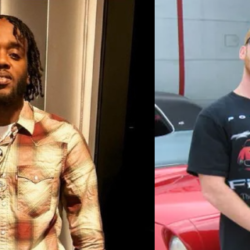
 RSS Feed
RSS Feed Twitter
Twitter

